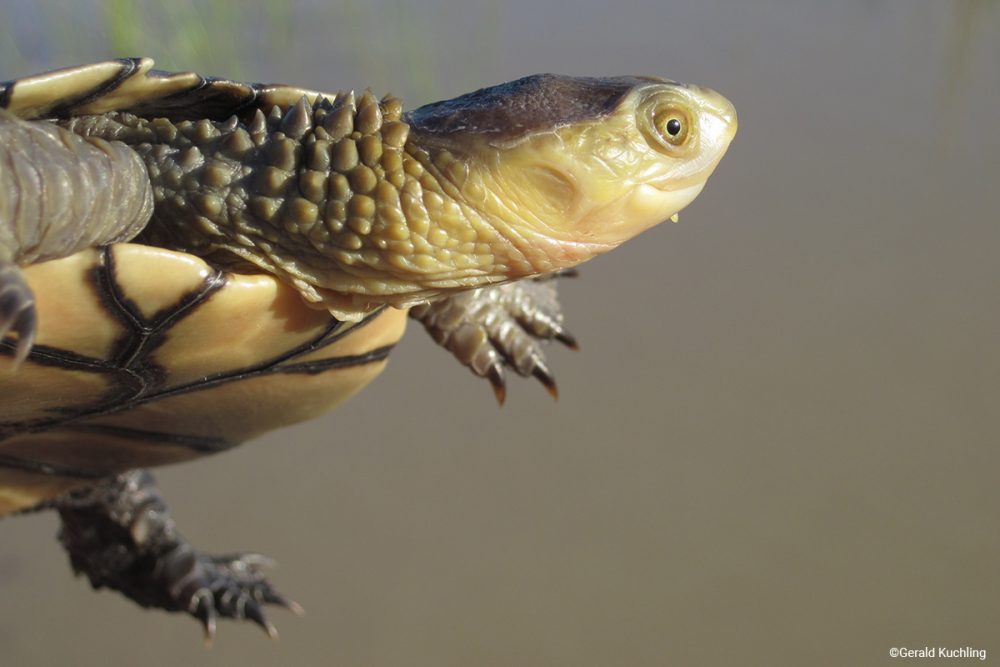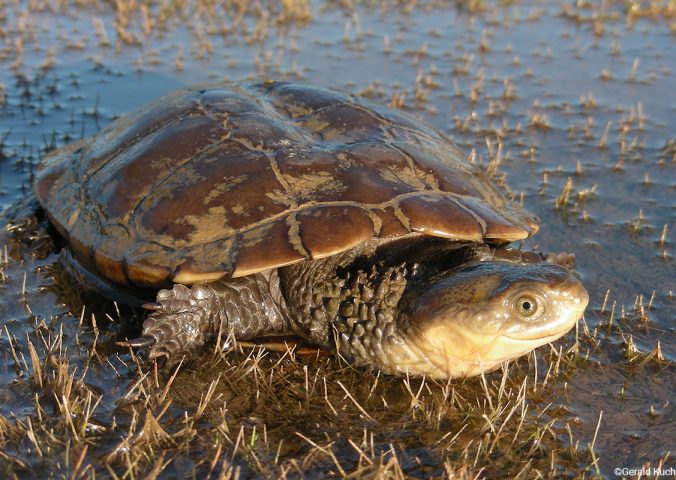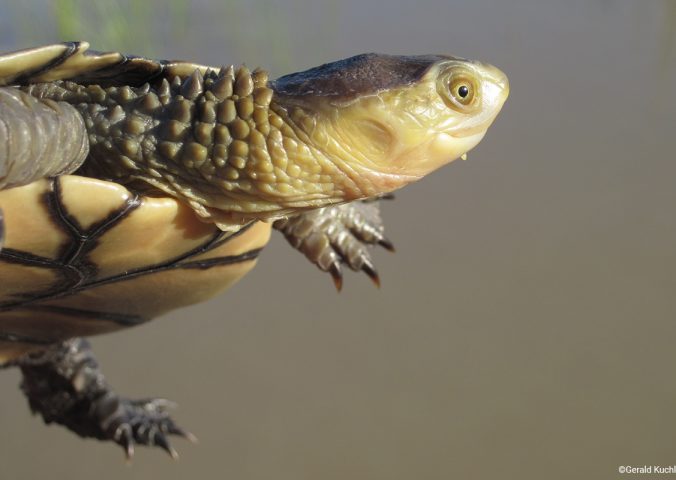About
The Critically Endangered western short-necked turtle is reported to be Australia’s most endangered reptile. Following extensive loss of habitat, fewer than 20 adults remained in the 1980s.
Thankfully, intensive conservation efforts for the past three decades have seen the species avoid almost certain extinction. The species now survives in two small protected areas in Western Australia, which are managed to exclude invasive predators, and captive breeding and reintroductions have bolstered the remaining wild population.
The western short-necked turtle is a small and unusual species. It is the sole surviving member of its genus, and diverged from all other living species around the time of the extinction of the dinosaurs! Should this species become extinct, we stand to lose an entire branch of the tree of life.
Historically, the species has been threatened by extensive loss of its original habitat to make way for urban expansion, clay excavation, agriculture, vineyards and livestock. The species is also predated upon by invasive species, such as foxes and rats.
The western short-necked turtle is listed as Critically Endangered by the IUCN Red List, due to its small population, recent declines and small area of occurrence. This species is listed on CITES Appendix I. Continued management and protection of the surviving population is vital for the survival of this species.
- Order: Testudines
- Family: Chelidae
- Population: >50 individuals
- Trend: stable
- Size: 15cm (?)
EDGE Score
Distribution
This species is restricted to clay swamps of the Perth region of Western Australia.
Habitat and Ecology
This species is found in shallow, seasonal clay swamps which dry out in the hotter months. It is the only turtle known to excavate nests with its forelimbs; all other species use their hind limbs. It estivates during the summer and emerges to feed and reproduce in the wet season.


